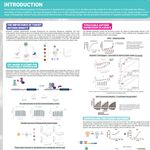The practice of diagnostic pathology has gone through a disruptive transformation in which multiple tools such as digital imaging, advanced artificial intelligence algorithms, and computer-aided diagnostic techniques are resulting in the availability of these new tools to assist, augment and empower the diagnostic pathology. Automated whole slide imaging (WSI) scanners are now rendering diagnostic quality, high-resolution images of entire glass slides and combining these images with innovative digital pathology tools that are making it possible to integrate imaging into all aspects of pathology reporting including anatomical, clinical and molecular pathology. The recent approvals of WSI scanner for primary diagnosis by FDA as well as the approval of prostate AI algorithm has paved the way for starting to incorporate this exciting technology for use in primary diagnosis Once the slides are digitized, artificial intelligence tools are providing a unique platform for innovations and advances in anatomical and clinical pathology workflows. This talk will describe where we are in the journey towards utilizing these digital pathology and AI tools for routine pathology practice and what are the possibilities, once fully implemented.
Learning Objectives
At the end of this presentation, the participants will be able to:
1. Provide an overview of digital pathology and AI and how it can help increase our diagnostic accuracy and efficiency
2. Explain the role of digital pathology and AI in optimizing our efficiency.
3. List applications of digital pathology and AI-enabled workflows in routine diagnostic pathology and discuss future directions





